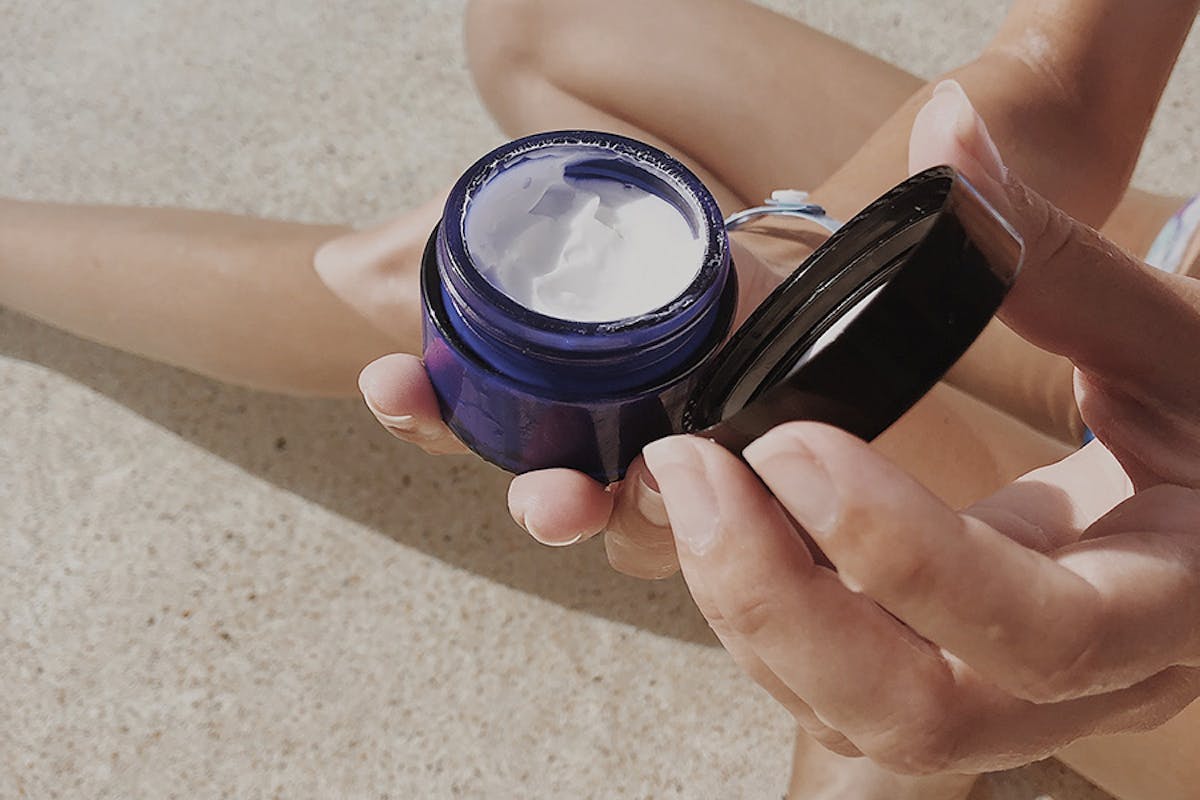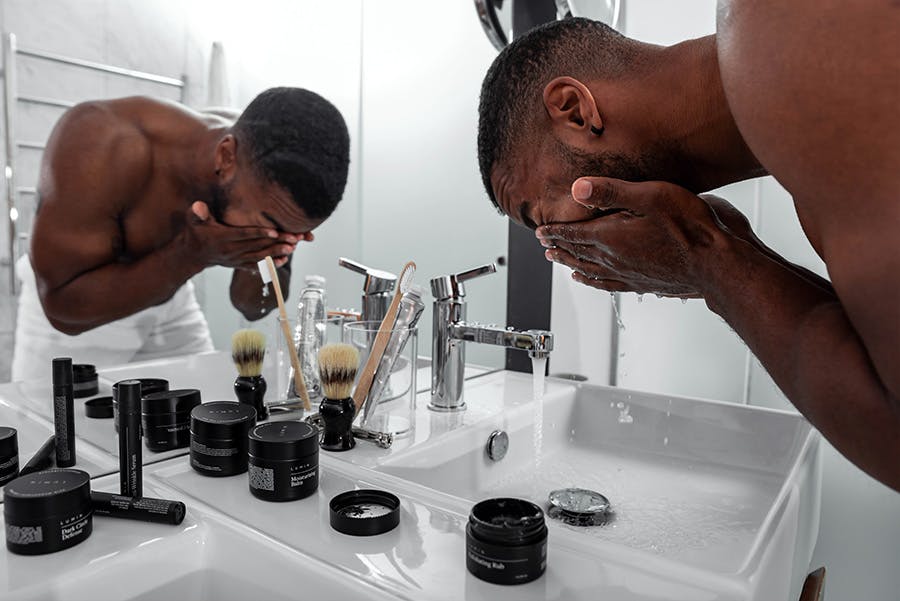Hidden Toxins In Everyday Skincare: Which Ingredients To Avoid
Many harmful chemicals are still being added to skincare products.

Bare Blends
2021-04-16

We’ve done a lot of research into nutrition and its direct effect on our skin health here at Bare Blends. Since the launch of our skincare range, Bare & Fair, we’ve done a lot of digging into the ingredients found in skincare, and why it is just as important to be mindful of what we’re putting on our bodies, as well as in.
As the body’s largest organ, our skin absorbs a large amount (about 60%) of the products that we put on it. This means that some chemicals can be absorbed through the layers of our dermis, and, for some substances, a small amount can travel directly into our blood vessels and bloodstream.
What’s concerning is that many harmful chemicals are still produced in skincare today, and you could inadvertently be applying carcinogens, endocrine disruptors or allergens directly onto your skin when you apply your moisturiser every morning.
How do these products still make it into skincare formulations? It’s because there is still a lack of regulation in many countries. Choosing skincare that’s safer to use and free from harmful chemicals is up to us. Having a quick read of the ingredient list before you purchase doesn’t take long and could make a huge difference to your overall health. Any product that doesn’t list it’s ingredients on the packaging may be cause for concern.
The good news is that the world is waking up to these harmful ingredients, and we’re now more aware than ever of what we should be avoiding and what we should look for in a skincare product.To make it easy, we’ve compiled a list of the most common ingredients to avoid.
Toxic Skincare Ingredients To Avoid:
Aluminium
Still found in a lot of antiperspirant deodorants, aluminium is a metal that can disrupt the endocrine system.
SLS and SLES
SLS (Sodium Lauryl Sulfate) and SLES (Sodium Lauryl Ether Sulfate) are foaming agents that create lather and bubble, and they can be included skincare and cosmetics, shampoo, toothpaste, and more. SLS and SLES are surfactants that can cause skin irritation or trigger allergies.
Parabens
Butyl, propyl and ethyl are parabens that have been linked to hormone disruption. In 2004, a research paper found that traces of parabens were evident in breast cancer tissue samples. Parabens are therefore best avoided.

Palm oil
For ethical and environmental reasons, products with palm oil should be avoided in favour of palm-oil free alternatives. Palm oil manufacturing is responsible for a large amount of deforestation, and even ‘certified sustainable’ palm oil still has adverse effects on natural habitats and lack of regulation.
Ethanolamines (DEA, MEA and TEA)
Monoethanolamine (MEA), diethanolamine (DEA), or triethanolamine (TEA) are emulsifiers found in foundation, mascara, and skincare products. They are sometimes classified as safe for cosmetic use, but they’re also shown to be allergens and can cause mild to moderate skin and eye irritation.
Polyethylene glycol (PEG)
As well as PEG, there is propylene glycol (PG) and butylene glycol (BG). These are chemical thickeners and can be found in some cream-based products like lotions, shampoo, and sunscreen. They could be petroleum-derived and irritating to the skin.
Petroleum
Petrolatum, or petroleum jelly, derived from petroleum is a moisturising agent which forms a layer on the skins surface, which holds in water but also blocks pores and the skin’s respiratory properties. The main concern with using petrolatum is the potential contamination with PAHs, which are carcinogenic.
Formaldehyde
A carcinogen and toxic ingredient to avoid, formaldehyde can still be found in some hair straightening products, nail polish, eyelash glue, and other things. While it’s unlikely that you’ll see ‘formaldehyde’ on an ingredient label, it might be hiding under another name, such as diazolidinyl urea, 3-diol Imidazolidinyl urea, DMDM Hydantoin, Quaternium-15, Nitorpropane-1, Formalin, Methanal, Methyl Aldehyde, Methylene Oxide. In Australia, free formaldehyde is still permitted as a preservative ingredient in cosmetic hair products at concentrations of up to 0.05 per cent.
Synthetic fragrances
Not just perfumes, but any product that smells good will most likely have fragrance added. When a label says ‘fragrance’ or ‘parfum’ those fragrances most likely contain heaps of chemicals that don’t have to be listed by the brand. This makes it very hard to discern what’s toxic and what’s not.
Triclosan
Commonly found in soaps, mouthwash, shaving cream, deodorants and toothpaste, triclosan is a synthetic antibacterial agent that has the potential to disrupt thyroid function and is potentially very toxic.
Phtalates
Often hiding under as part of a ‘fragrance’ could be phtalates which are used as lubricants and softeners. Phtalates are significant endocrine disruptors and should be avoided.
Siloxanes
Siloxanes are silicone-based compounds used in cosmetics to soften, smooth, and moisten. Siloxanes have been found to be an endocrine disruptor, based on evidence that it interferes with human hormone function. It can also be harmful to fish and aquatic life.
Mineral oil
Found in creams, lotions, ointments, and cosmetics, mineral oil is a petroleum by-product that coats the skin like plastic and can clog pores. It interferes with the skin’s ability to eliminate toxins, increasing the likelihood of acne and other skin disorders. Mineral oil is one of the biggest contaminants for humans, and can build up in the skin over time.
Your skincare products should be made with pure, organic ingredients, and should definitely not contain any toxic ingredients that could adversely affect your health. Any product that doesn’t show the full ingredients list on its packaging should be avoided. If it looks suspicious, the ingredients probably are. Knowledge is power here, so if you’re unsure what an ingredient is, look it up.
If you haven’t yet tried completely natural skincare products, we encourage you to start. Small changes can amount to big improvements, and knowing what to avoid could make a huge difference, not just on your skin, but on your overall health and wellbeing.
